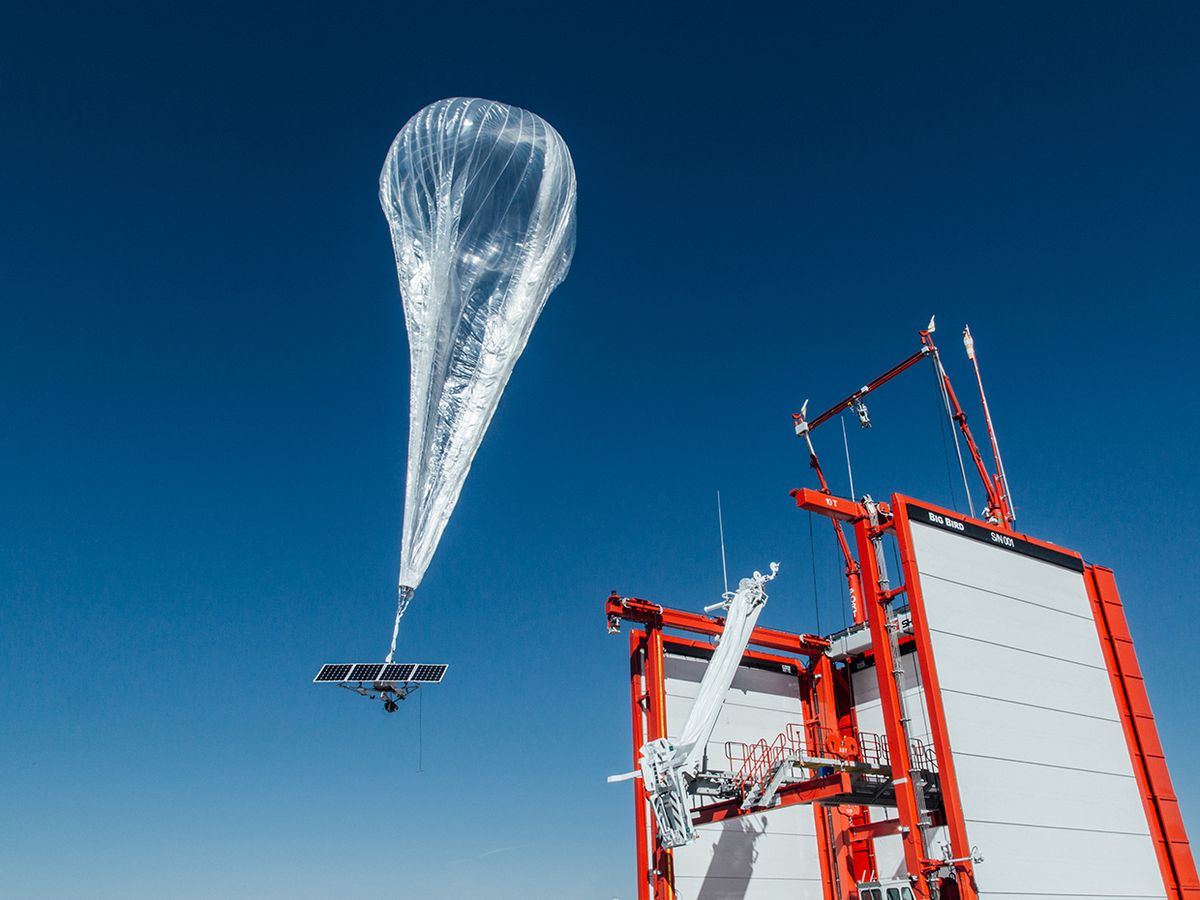Last year, Alphabet’s Project Loon made a big shift in the way it flies its high-altitude balloons. And that shift—from steering every balloon in a huge circle around the world to clustering balloons over specific areas—allowed the project to provide basic Internet service to more than 200,000 people in Puerto Rico after Hurricane Maria.
Project Loon, which belongs to Alphabet’s moonshot company X, floats balloons up to 20 kilometers (12 miles) above ground to send Internet service back down to rural areas. This service should, in theory, reach more people for less money than it would take to install base stations or fiber optic cables in those areas.
Lately, Project Loon has also used its balloons to provide emergency Internet service to areas affected by natural disasters. The first time it did this was in early 2017, when Peru suffered floods and landslides that damaged communications infrastructure.
Executing either strategy hinges on being able to position balloons precisely enough to provide reliable, consistent coverage—no small feat for plastic balloons roughly the size of a tennis court that are being batted around by powerful stratospheric winds.
The team’s original idea, described in a 2017 blog post by X’s leader Astro Teller, was to deploy a fleet of balloons that would each circumnavigate the planet. The balloons’ flight paths would work sort of like conveyer belts. Whenever one balloon floated off to a new positon, the next one would move in to replace it, maintaining continuous service for users on the ground.
But during flight tests, the team realized their navigation system could control the balloons more precisely, as Teller says in his blog post, and keep them circling more closely than expected. So the team switched to a new strategy—forming clusters of balloons above specific areas. Later, this shift would prove essential to allowing the project to establish and maintain service for the island of Puerto Rico.

Salvatore Candido, the principal engineer for Project Loon who led the development of the navigation system that controls the balloons, spoke with IEEE Spectrum about building it.
“The one really hard thing is making the balloon be in the place you want it to be,” he admits. (Loon’s launch engineers also had to figure out how to send massive balloons into the stratosphere, but that’s another story).
Each balloon has a solar-powered pump that can move it up and down by adding or releasing air. Adding air makes the balloon sink, because there’s more mass spread out over the same volume, so it’s heavier. (This is similar to how a submarine works, Candido points out).
With the help of that pump, the balloons can move into and out of winds that blow more or less constantly through the stratosphere. Imagine taking an elevator up or down a few floors and then hopping on a moving sidewalk.
To create a navigation system that would coordinate the balloons’ movements, the Loon team needed to understand those stratospheric winds. They started with models and forecasts issued by scientific agencies including the U.S. National Oceanic and Atmospheric Administration.
Then, they launched balloons to acquire their own data in areas they were likely to fly in. “One thing we really try and do is go and gather ground truth wind data in the places we want to serve,” Candido says. “When we actually send balloons there, that helps us build a more local model.”
It’s impossible to fly everywhere, though, so the team constantly runs simulations to supplement its models. In fact, Project Loon runs simulations of balloons that fly more kilometers every night than its real balloons have cumulatively flown since the project’s first flight test in 2013. “This is very much a computer science project,” Candido says.
All of those simulations are used to tweak the models and algorithms that feed Project Loon’s navigation system, which features machine learning algorithms that plot a balloon’s course as “a series of maneuvers that are decided upon one by one, as they’re needed, rather than plotted out well in advance,” as one press release put it.
The navigation system is already highly automated, and Candido aims to make it even more so. “Our goal is to have one or two operators per fleet, and lever up that person’s capabilities with a lot of automation,” he says.
Project Loon continues to collect data from tests to refine its models and improve its simulations. They’re not perfect yet, which is probably why X declined to share the average data rates that Puerto Ricans could access through its service. The entire project and any results are still considered experimental.

All the company would say it that it provided “basic Internet communications” including email, text messaging (but not voice service), and limited web access to more than 200,000 people. It’s also worth remembering that the balloons over Puerto Rico supported many more users over a relatively small area in San Juan than would be typical for the project.
The company also wouldn’t say exactly how many balloons it took to serve Puerto Rico, except to say each balloon can cover 5,000 square kilometers. The entire island is only 9,000 square kilometers in size.
Last week, Project Loon tweeted that it would start to “wind down” its service in Puerto Rico, now that connectivity has largely been restored on the island.
Looking back, Candido is generally pleased with the results of Project Loon’s work there. “We had a handful of balloons down there and we were able to keep them mostly over the island,” he says.



